Pancreatic Cancer

What do actor Patrick Swayze, Steve Jobs and U.S. Supreme Court justice Ruth Bader Ginsburg have in common? They were all diagnosed with pancreatic cancer, the 12th most diagnosed type of cancer, but the fourth leading cause of cancer death overall.
In 2013, the American Cancer Society estimated 46,420 people would be diagnosed with pancreatic cancer, and 39,590 would die of the disease. Swayze passed away in 2009 and Jobs in 2011, while Justice Ginsburg died September 18, 2020 .
What Is a pancreas?
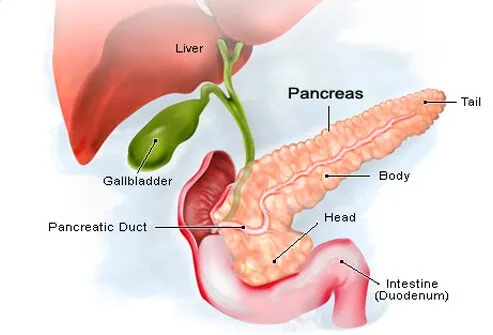
The pancreas is an organ that is part of the digestive system. It sits behind and below the stomach in the back of the abdominal cavity. It has two main functions: making digestive enzymes that help break down the proteins in your food, and producing the hormone insulin, which helps regulate your blood sugar levels.
What Causes Pancreatic Cancer?

The biggest risk factor for developing pancreatic cancer is smoking. Smokers are twice as likely to develop the disease compared to non-smokers. Other causes of pancreatic cancer that can be controlled are obesity and work-related exposure to certain pesticides, dyes, and other chemicals. Risk factors for pancreatic cancer that cannot be controlled include aging, being male, being African-American, family history of the disease, diabetes, and certain genetic disorders.
What Are the Symptoms of Pancreatic Cancer?

In the early stages, pancreatic cancer may cause no symptoms, or if it does the symptoms may resemble other illnesses. For that reason, it is often referred to as a "silent killer," as the disease may be difficult to detect early on. When symptoms do appear, they include yellowing of the skin and of the whites of the eyes (jaundice), light-colored stools, dark urine, abdominal pain, unexplained weight loss, and fatigue.
How Is Cancer of the Pancreas Diagnosed?
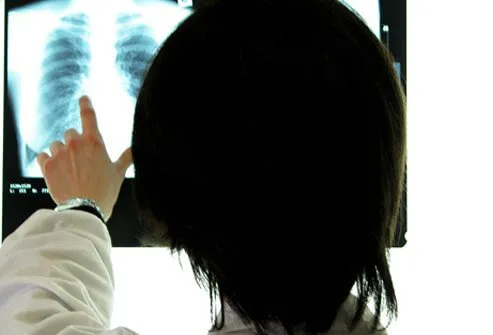
To diagnose pancreatic cancer, first, the doctor will do a complete physical exam and history. Then blood, urine, and stool tests may be done.
How Your Doctor May Diagnose and Stage Pancreatic Cancer
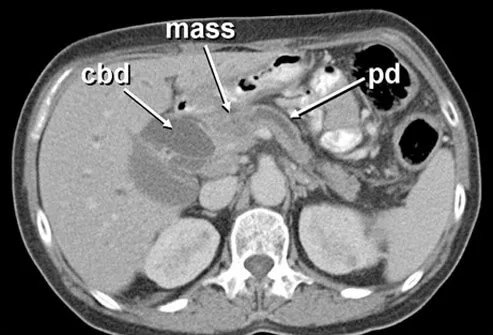
There are additional tests a doctor may order to diagnose and stage pancreatic cancer. These tests include:
- Angiogram: an X-ray that images blood vessels to show if an area of blood flow is blocked, such as by a tumor.
- CT scans: these are types of X-rays that show cross sections of the body and can also help determine if the cancer has spread to other organs.
- Transabdominal ultrasound: this uses sound waves to form a picture of the organs in the abdomen, and can distinguish types of pancreatic tumors.
- ERCP (endoscopic retrograde cholangiopancreatogram): this is a type of scope test that allows doctors to examine the ducts that drain the pancreas.
- Endoscopic ultrasound (EUS): similar to an ERCP, this is a procedure in which an endoscope containing an ultrasound probe is inserted into the mouth and down through the stomach where it then scans the pancreas for cancers.
How Is Cancer of the Pancreas Treated?

Because pancreatic cancer often has no symptoms in the early stages, it is often found in later stages, which makes curing the disease more difficult. Treatment for pancreatic cancer depends on the stage, or extent, of the cancer, as well as the patient's health. Treatment options include surgery, ablative treatments to destroy the tumor, radiation, and chemotherapy.
Surgery for Pancreatic Cancer
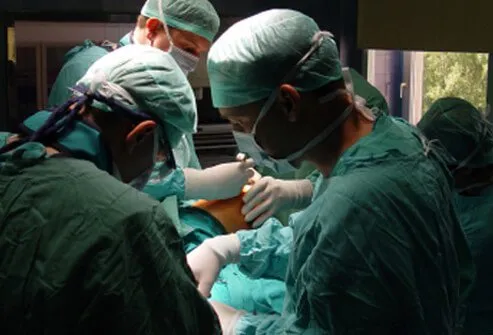
There are two types of surgery for pancreatic cancer: potentially curative (done when tests suggest that all the cancer can be removed), and palliative (performed to relieve symptoms when the cancer is unable to be completely removed).
The most common potentially curative surgery is called a pancreaticoduodenectomy, or Whipple procedure, where the head and sometimes the body of the pancreas are removed. In some cases, parts of the small intestines, bile duct, gallbladder, lymph nodes, and stomach may also be removed. This is a major operation best done by a surgeon experienced in doing such a procedure.
What Are the Side Effects of Pancreatic Cancer Surgery?

Complications or side effects of pancreatic surgery depend on the procedure being performed, the patient's overall heath, and other factors. Most patients will experience post-operative pain, which can be controlled with medicine. You may feel weak or tired following surgery and require a few weeks to months to recover. Following the Whipple procedure, you may experience bloating, fullness, nausea, or vomiting. This can often be modified with changes in diet as your body recovers.
Some complications following surgery to treat pancreatic cancer include infections, bleeding, difficulty emptying the stomach, and leaking from various surgical connections.
Radiation Therapy for Pancreatic Cancer
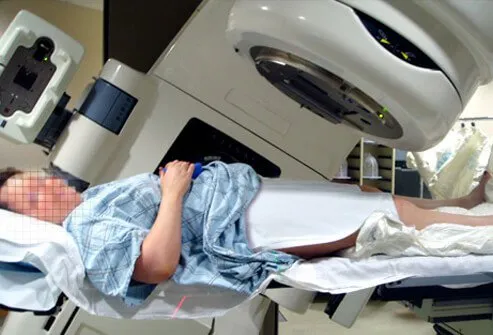
Radiation therapy (radiotherapy) uses high-energy radiation to kill cancer cells. It is usually given in a hospital or clinic, and the course of treatment is generally 30-minute sessions, five days a week for several weeks.
Radiation therapy may also be used to relieve the pain caused by the tumor, or in an attempt to keep the tumor from growing. It is sometimes given before surgery to try to shrink the tumor pre-operatively, or it may be given post-operatively to kill any cancer cells that might be left.
Side Effects of Pancreatic Cancer Radiation Therapy
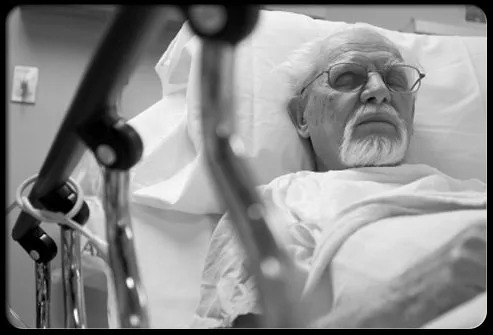
Though the radiation therapy procedure itself is painless, patients may experience side effects from the treatment, including nausea, vomiting, loss of appetite, diarrhea, and extreme fatigue. Many of the side effects can be treated with medications, and most resolve within a few weeks after the treatment stops.
Chemotherapy to Treat Pancreatic Cancer

Chemotherapy, also called "chemo," is another treatment option for pancreatic cancer, and it uses drugs usually given intravenously to kill cancer cells throughout the body. It is not localized, and it may harm healthy cells as well.
It may be administered before or after surgery, it may be given alone, or in combination with radiation therapy. It is usually administered in cycles of a few weeks at a time, with a rest period so the body can recover.
Side Effects of Pancreatic Cancer Chemotherapy

Because chemotherapy can also harm healthy cells, it often causes side effects. Hair loss is common because the chemo damages cells in the hair roots. Damage to blood cells can cause infections, bruising or bleeding easily, weakness, and fatigue. In addition, damage to cells in the digestive tract can cause nausea, vomiting, diarrhea, poor appetite, and mouth or lip sores. Some chemotherapy drugs may cause numbness or tingling in the hands and feet. Your doctor may be able to prescribe medication to help ease some of these side effects.
Newer Targeted Therapies

Targeted therapy uses substances produced by the body or synthetic versions of these substances – such as antibodies, cytokines, and other immune system features, which can target the cancer cells – to treat disease.
One type of targeted therapy is referred to as immunotherapy, and the goal is to stimulate the body's immune system to attack cancer cells.
Side Effects of Pancreatic Cancer Biological Therapy
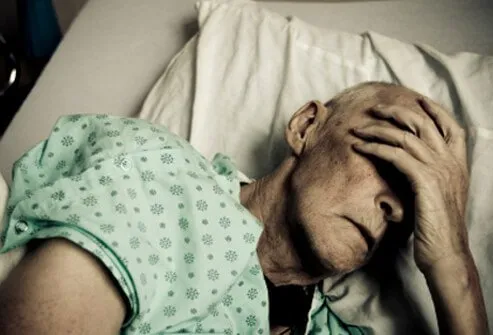
Side effects of targeted therapies for pancreatic cancer vary depending on the type of treatment. Many causes flu-like symptoms, allergic reactions, lower blood counts, and even organ damage. Some may cause side effects such as urinary side effects or even secondary cancer.
What Happens After Treatment?

It is very important to go to all follow-up appointments with your doctors after completing pancreatic cancer treatments. Some treatment side effects will last months, years, or even the rest of your life and will need to be managed. You will need to be monitored closely to check for recurrence of the cancer. Your follow-ups will likely include a physical exam, blood tests, and CT scans. Discuss your follow-up schedule with your doctor.
Support for Pancreatic Cancer Patients

Coping with a cancer diagnosis can be challenging for both patients and their families.
- Talk to your doctors and other health professionals about your questions and concerns in dealing with your treatment and your cancer.
- Social workers can also be helpful in suggesting resources for financial aid, home care, and emotional support.
- Members of the clergy can offer emotional support.
- Support groups for patients and family members are a safe place to share experiences coping with the disease and the effects of treatment.
- The National Cancer Institute's Cancer Information Service Cancer Information Service can help you locate programs, services, and publications. Call 1-800-4-CANCER (422-6237)
Cancer Programs and Services
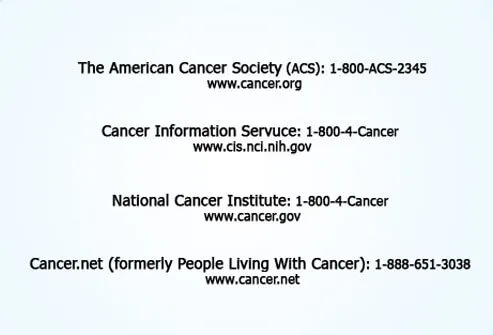
There are many programs and service for patients, loved ones, and caregivers that will help everyone involved manage and understand the disease, treatment, and recovery processes.
What Does the Future Hold for Pancreatic Cancer?

There are medical advances being made that may offer new treatment possibilities for pancreatic cancer in the future. Some of the treatments being studied include a type of laparoscopic surgery, new types of radiation therapy, new combinations of chemotherapy drugs, targeted therapies (such as growth factor inhibitors and anti-angiogenesis drugs), immunotherapies (such as monoclonal antibodies and vaccines), and individualized therapies. Your team of doctors can help you decide on the best therapeutic protocols for your condition.
Pancreatic Cancer Symptoms, Causes, and Treatment
This tool does not provide medical advice. See additional information: 
© 1996-2024 WebMD, LLC. All rights reserved.
